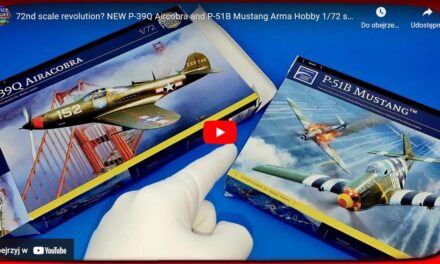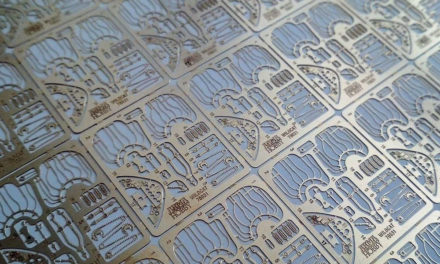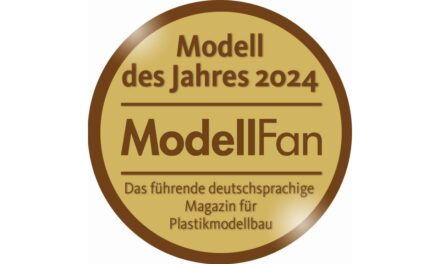Who was the pilot of the “winged salamander” No. 2, the later commander of Squadron 303? What were the markings of his P.11c? Let’s find the answer in the next episode of our series about Squadron 112.
Młodość Pilota
 Wacław Łapkowski was born on 6 November 1913 in Dyneburg (Polish Dźwińsk, present-day Daugavpils in Latvia). His parents were Ambroży Łapkowski and Wacława née Stomma. His father died in the Polish-Soviet War of 1920. Wacław Łapkowski passed his school-leaving examination at Cadet Corps No. 2 in Chełmno in 1932, and was accepted to the Aviation Officer Cadets School in Dęblin, from which he graduated as a Pilot Officer/Observer in 1934. At the time, the Aviation Officer Cadets School in Dęblin did not train pilots, and so the only way to become a military pilot was to graduate from Dęblin as an Observer, enrol as a trainee with an Air Force unit, and then requalify as a pilot. P/O Łapkowski was assigned to the 1st Aviation Regiment, and from there delegated to a glider and introductory piloting course at the Aviation Officers Training Centre in Dęblin. After completing training, in November 1934, he was posted to 113 Fighter Squadron. In 1935, he passed a basic piloting course at the Aviation Officers Training Centre in Dęblin and, as a pilot, was assigned to 11 Line Squadron of the 1st Aviation Regiment.
Wacław Łapkowski was born on 6 November 1913 in Dyneburg (Polish Dźwińsk, present-day Daugavpils in Latvia). His parents were Ambroży Łapkowski and Wacława née Stomma. His father died in the Polish-Soviet War of 1920. Wacław Łapkowski passed his school-leaving examination at Cadet Corps No. 2 in Chełmno in 1932, and was accepted to the Aviation Officer Cadets School in Dęblin, from which he graduated as a Pilot Officer/Observer in 1934. At the time, the Aviation Officer Cadets School in Dęblin did not train pilots, and so the only way to become a military pilot was to graduate from Dęblin as an Observer, enrol as a trainee with an Air Force unit, and then requalify as a pilot. P/O Łapkowski was assigned to the 1st Aviation Regiment, and from there delegated to a glider and introductory piloting course at the Aviation Officers Training Centre in Dęblin. After completing training, in November 1934, he was posted to 113 Fighter Squadron. In 1935, he passed a basic piloting course at the Aviation Officers Training Centre in Dęblin and, as a pilot, was assigned to 11 Line Squadron of the 1st Aviation Regiment.
Photo: Wacław Łapkowski at the age of 19, as a graduate of the Cadet Corps No. 2, at that time he decided to become a military airman. (arch. Dorota Nowakowska)
Uskrzydlone salamandry cz. 2, 112 Eskadra Myśliwska w obronie Warszawy
On the left: P/O Wacław Łapkowski, photographed around 1937 as a pilot of the 112th Fighter Squadron in the 1st Air Regiment. Łapkowski is dressed in an Air Force officer’s uniform mod. 36, wings of a military pilot of 2nd class are visible on his chest. . (arch. Marek Rogusz)
On the right: F/O Wacław Łapkowski photographed a year before the outbreak of II World War, in the background fragment of PZL P.11c fighter is visible. (arch. Marek Rogusz)
Fighter pilot
A year later, in 1936, he took a advanced piloting course at the School of Aerial Bombing and Gunnery in Grudziądz, whereafter, in July 1936, as a fully qualified fighter pilot, he was posted to 112 Fighter Squadron of the 1st Aviation Regiment. Wacław Łapkowski came to be recognized as capable pilot and officer, and in 1938 was promoted to Flying Officer, receiving command of a Section in 112 Fighter Squadron, and thereafter to Deputy Squadron Commander. Subsequently, he was selected for studies at the Wyższa Szkoła Wojenna (Higher War School) in its 20th class (1939–1941). He commenced a period of traineeship in connection with his planned studies (with various infantry and anti-aircraft artillery units), however due to the threat of war he returned to 112 Fighter Squadron. Wacław Łapkowski took part in the September Campaign of 1939 as a pilot, commanding a Section in 112 Fighter Squadron, III/1 Fighter Wing of the Pursuit Brigade, flying on PZL P.11 fighter aeroplanes. Following the death of F/O Stefan Okrzeja, F/O Wacław Łapkowski became Deputy Commander of 112 Fighter Squadron. He carried out a dozen or so sorties and two reconnaissance flights over areas occupied by the Germans. He was officially awarded 1 and 1/3 kills for the September Campaign of 1939.

Wacław Łapkowski’s passport issued at the Polish Embassy in Bucharest on 27th September 1939, allowed him to travel from Romania to France, after the surrender of France in June 1940 Łapkowski arrived to Britain and was enrolled to the Polish Air Force which was organizing on British soil. (arch. Dorota Nowakowska)
Defending France and Britain
On 17 September 1939, he was evacuated along with the ground group of the squadron to Romania, from where, after a few weeks, he made his way to France. Initially designated CO of a fighter section defending Bourges, he was ultimately assigned to DAT Section, commanded by F/L Tadeusz Opulski, which was charged with safeguarding the airspace of Romorantin. While in France, he performed a dozen or so sorties but did not report any kills.

Pilots of the original team of the fighter section defending Bourges, France, in 1940. Right to left: Cpl Władysław Majchrzyk, Lt Wacław Łapkowski (wearing officer uniform in the colours of pre-war Polish Air Force) , Lce Cpl Jan Kremski, Capt. Bronisław Kosiński, Lt Marian Wesołowski and Lce Cpl Wacław Giermer. (arch. Sikorski Institute London via Gretzyngier)
Following the fall of France in June 1940, he escaped to Great Britain, where he received service number P-1506. In the beginning of August 1940, F/O Wacław Łapkowski was posted to 303 Fighter Squadron, which was then in the process of formation. During aerial combat on 5 September 1940, he shot down a German bomber, however his aircraft – a Hawker Hurricane I (code RF-Z, no. P2985) – fell victim to a German fighter; wounded and burned, Łapkowski managed to bail out to safety. Following a lengthy period of hospital treatment, he returned to 303 Fighter Squadron in January 1941.

No. 303 (Polish) Squadron pilots at Northolt during the hottest (literally) days of Battle of Britain in September 1940. Seated left to right: Jan Kazimierz Daszewski, Ludwik Paszkiewicz, Witold Łokuciewski, Wacław Łapkowski. Mirosław Wojciechowski is standing behind them. (arch. Sikorski Institute London via Gretzyngier)
On 22 January 1941, during an attack on a German airfield in France, his aeroplane, a Hawker Hurricane I (code RF-W, no. W9129), was damaged by a wire torn from an electricity pole, but he returned safely to base. In February 1941, Wacław Łapkowski was made Commander of Flight „B”, 303 Fighter Squadron, while a month later he was promoted to Flight Lieutenant.
In command of 303 Squadron
On 13 April 1941, Łapkowski was appointed CO of 303 Squadron following the death of Zdzisław Henneberg, however on the same day he was wounded in a dogfight. He assumed command of 303 Fighter Squadron in the beginning of May 1941, after returning to the unit.

On 13 April 1941, Łapkowski was appointed CO of 303 Squadron following the death of Zdzisław Henneberg, however on the same day he was wounded in a dogfight. He assumed command of 303 Fighter Squadron in the beginning of May 1941, after returning to the unit.
The middle months of 1941 were a very intense period for the pilots of 303 Fighter Squadron. On 4 June 1941, F/L Łapkowski damaged a Messerschmitt Bf 109, while on 18 June he shot down one Bf 109; on 22 June, he downed two more Messerschmitt Bf 109s, and another two days later.
Photo: In the personal belongings that remained after Łapkowski death, there are several photographs of a young English woman in a WAAF uniform (in this photo she wore Łapkowski officer’s cap). Her identity remains unknown, it is only known that the relationship was serious and a wedding was to be planned soon. (arch. Dorota Nowakowska)
On 2 July 1941, he led 303 Fighter Squadron on a sweep operation, Circus 29, flying a Supermarine Spitfire IIB (code RF-V, no. P8596). He was shot down in a dogfight over the English Channel and perished. His body was washed ashore on the occupied Continent, and he was buried at the cemetery in Lombardsijde (Belgium), plot no. 224. While flying as a pilot of 303 Fighter Squadron, he carried out 33 sorties and 22 operational flights. Squadron Leader Wacław Łapkowski (he was promoted posthumously) is 27th on the list of Polish fighter aces of World War II, with 6 and 1/3 confirmed kills and one aircraft damaged. Wacław Łapkowski was the recipient of the Silver Cross of the War Order of Virtuti Militari (no. 08819), and of the Cross of Valour (four times).
The author would like to thank Ms. Dorota Nowakowska, Mr. Wojtek Matusiak and Mr. Robert Gretzyngier for help and advice in preparation of this biography.
English translation by Maciej Zakrzewski
Salamander „2” painting scheme
In order to keep alive the memory of the winged salamander – a beautiful, charming and yet relatively unknown emblem closely associated with the history of Polish military aviation – Arma Hobby has selected Salamander “2” as one of the finish options for its model of the PZL P.11c aeroplane (product no. 40001). The proper “salamandrian” shape was determined on the basis of extant good quality photographs of the emblem. Photographs of aircraft from 112 Fighter Squadron from September 1939 show that the salamanders were to a certain extent individualized, however it seems that they were painted using a template, with the subsequent addition of hand-painted accents. Our proposed colouring of the figure is, on the whole, a creative interpretation and development of what is known about the style of emblems applied by the 1st Aviation Regiment of Warsaw, and how such devices were painted on aircraft in practice. Taking the above into consideration, we do think that we have recreated the emblem in a way that is both aesthetically pleasing and historically accurate. Another element of the aeroplane’s paint scheme is the tactical number “2”, which was affixed using silver paint – here we have based ourselves on available photographic materials. The same applies to the black underwing so called police number, 666-N. An issue that still had to be resolved, however, was that of the military serial number, which is not visible on any of the extant photographs. Following an analysis of the history of PZL P.11c aircraft with known serial numbers that were flown by 112 Fighter Squadron, we selected three, and of these ultimately chose number “8.144” as the most probable.

In accordance with the current state of knowledge, Salamander “2” was painted in the same way as the majority of aircraft of the Pursuit Brigade in September 1939, with the upper wing and control surfaces in late Polish khaki, and the wing undersides in grey-blue. At the time, most P.11s did not have stenciling, while instruction plates for the Viet starter and the PZL logo on the control surfaces were frequently painted over. The military registration number and airframe type were affixed in black (the former only on the left side of the fuselage). The checkerboards on the wing undersides are in the version without white squares (as per photographic materials). As regards the upper wing surfaces, we have assumed – specifically in the lack of photographic materials – that the aircraft had outlined and asymmetrically spaced white and red checkerboards.
See Also:
- 40001 PZL P.11c Expert Set 1/48 and more in Arma Hobby online shop!
Uskrzydlone Salamandry cz.1 – godło 112 Eskadry Myśliwskiej w 1939 r.
Aeronautical engineer not working in his profession. History of Polish aviation 1918-1945 – its machines and people - is his greatest passion. Marek hunts for forgotten stories, helps to establish the fate of aviators and cooperates in Polish airplanes identification during archeological excavations. Author/co-author of many books and articles, incl. Polish Fighter Colours 1939-1947 vol. 1.
This post is also available in:
 polski
polski











